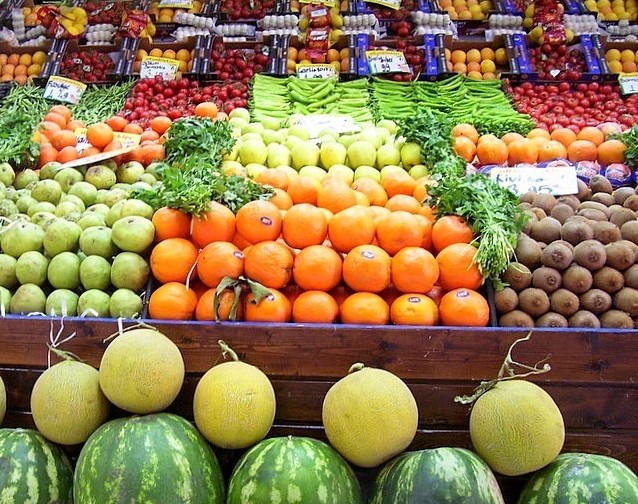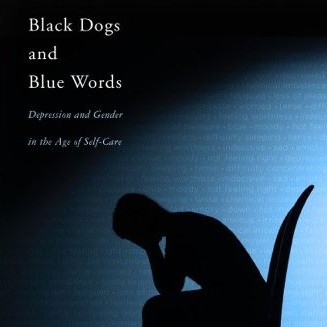Healthy Living: Metaphors We Eat By?
Contemporary public health promotion exhorts us to care for ourselves by following a healthy lifestyle including, crucially, eating healthily.1 Injunctions to eat a balanced diet, avoid junk food, and consume appropriate fuel for our bodies proliferate across institutional, popular, and commercialized health discourse.2 But how do people interpret and reconstitute this mainstream advice in relation to their everyday lives? How do they engage rhetorically with the imperatives of dominant health promotion discourse?3
We address these questions through a brief analysis of recurring metaphors in older adults’ responses to open-ended interview questions about healthy eating. These are the metaphors of healthy eating as balanced eating, food as fuel, and food as junk. Conceiving participants as rhetorical actors who draw on and reconfigure the resources of publicly circulating discourse, we explore how their uses of these conventional metaphors function in multiple and possibly strategic ways in their interpretations of healthy eating. Our analysis suggests that the situated uptakes4 of these metaphors in the participants’ responses not only reproduced but also amplified and ambiguated normative rhetorics of healthy eating.
Metaphor, according to Michael Billig and Katie MacMillan’s Aristotelian definition, “involves talking about one thing in terms of attributes normally associated with another” (460). Metaphor pervades everyday language and thought and affects how we understand and experience reality (Lakoff and Johnson).5 As a key mode of rhetorical invention and symbolic action, metaphor constitutes ways of seeing the world and influences attitudes, knowledge, values, and actions (Ivie; Gronnvoll and Landau; Foss 299-302). Otto Santa Ana argues that “metaphor shapes everyday discourse, and by this means it shapes how people discern and enact the everyday” (26). Because everyday discourse (re)constructs social values and ways of being, the metaphors that circulate within common language at once reveal, enact, and naturalize social orders (21). Attending to the most ubiquitous—and hence least noticeable—metaphors within rhetorics of health and medicine can, as Judy Segal notes, shed light on the values that these terms “smuggle into” healthcare policy and practice (115); however, the polysemous, dynamic, and contextualized “social usage” of metaphor (Condit et al. 303) means that idiomatic metaphors may not simply reproduce dominant ideology: the complex, shifting, and ambiguous meanings of commonplace metaphors in use shows how these applications may also destabilize naturalized meanings and values.
In 2010, we interviewed 55 adults aged 45-70 in three Ontario communities and one UK community about what healthy eating and active living meant to them. This project explored how citizens negotiated dominant discourses of healthy living in relation to their own lives including, as we examine here, how they drew on and reconfigured commonplace metaphors related to healthy eating. To help ensure that participants already possessed some interest in the topic of healthy living, we recruited through recreational physical activity organizations. We selected older adults because of our interest in how self-care imperatives are especially pronounced for aging citizens.6
Healthy Eating as Balanced Eating
The metaphor of balance appeared prominently in the participants’ views of how to fulfill the imperative of healthy eating, functioning as a motivational ideal for their efforts to be good health(y) citizens.7 Often, the term balanced operates as a substitute or equivalent term for healthy. As one participant explained, “I try to eat a balanced, healthy diet as much as I can.” The yoking of the terms balance and balanced with the term good, as in “a good balanced meal” or eating a “good balance” of foods, likewise emphasizes the metaphor’s positive valence. The association of good and balance reinforces the naturalized assumption that balanced eating is good because it is healthy, and healthy is—unquestionably—good; however, the use of good to modify balance and balanced also begs the question whether balanced eating is intrinsically good or whether it is possible to have a bad balance. This question, though not overtly addressed by participants, potentially destabilizes the commonplace equation that healthy eating equals balanced eating equals good eating.
Beyond its function as an abstract, motivational ideal in the participants’ responses, many characterized the metaphor of balance more concretely to mean eating the right proportions of the right kinds of foods, which together compose the desirable whole of healthy eating. This meaning evokes conventional public health guidelines that instruct citizens to daily eat a certain amount from a range of food groups, and these instructions are often imaged through a color-coded, pie-chart styled plate.8 According to one participant, “I interpret (healthy eating) as balanced eating: in other words, fruits, vegetables, healthy proteins . . . . I don’t think that there is a restriction of any one group; although, if there was, it would probably be in the fat group and the sugar groups, but I still think that it is healthy to eat from all different food groups.”
Others said healthy eating “means having a balanced diet with a variety of meat[s], fish, fruit[s and], vegetables but with allowable fat content probably,” or, less precisely, healthy eating “[is] balanced; so, you know, your proteins, your carbs, your this, your that, you know, [you] get a good balance in those.” This interpretation enacts the quasi-logical technique of dividing the whole into parts, the ideal whole of balanced eating comprising the sum of its parts (Perelman and Olbrechts-Tyteca 234); however, the participants’ tentative (i.e., “probably,” “possibly,” and “I . . . think”) and imprecise (i.e., “your this, your that”) language suggests uncertainty about the parts that make up the whole, which destabilizes the coherence of balanced eating as a motivating term.
Conversely, the inclusion of fruits and vegetables as two essential, but not exhaustive, parts of a balanced diet was stated more definitively. The repeated naming of these two food groups by the participants (i.e., “healthy diet, a good balance of fruit and vegetables”; “my balanced diet, lots of fruit and vegetables”; and “Healthy eating: It means having a really good balance of a lot of fruits, a lot of vegetables”) may have resulted because these two food groups are consistently present across public health guidelines compared with the more diverse, and contested, categorization of other required groups.9 Contrasting with the quantitative division of the whole into (more or less) all its parts, the naming of fruits and vegetables as the two most important food groups constructs a more qualitative—and more manageable—meaning for balanced eating.
The conventional configuration of the balance metaphor as a [pie-chart] whole comprising appropriate food groups was the primary sense used by the participants, but some also invoked the sense of balance as a scale for regulating the even distribution of weights and counterweights. In this interpretation, balanced eating means achieving a balance between healthy foods (located on one side of the scale) and unhealthy foods (located on the other side of the scale). Instead of reproducing the health promotion sense of balance in which all parts of the whole are healthy, this use of the metaphor legitimates eating some unhealthy foods because they are counterbalanced by healthy ones. As one participant explained, “I know when I am eating things that are calorie thick—and I suppose I do—, I’d want to balance out with something healthy when I do it”; another said she wanted to “get the balance . . . [that] can allow you sometimes to indulge in less healthy eating.” Another participant actively resisted following the rule book too closely, constructing this approach to eating as excessive and hence imbalanced:
I don’t necessarily wanna follow everything in the book. I can go overboard into something too much that, you know, I would rather balance. Like, balance, I think is the key if I can sort of take a little bit of this and a little bit of that and sort of find something that’s comfortable to me. Like, I’m not gonna give up chocolate chip cookies.
Though not directly opposed to the mainstream (healthy) whole-part meaning, this alternative sense of balance amplifies the metaphor’s potential functions for how lay people negotiate dominant health advice by offering a logical framework that makes the balancing of healthy and unhealthy foods a sensible, justifiable approach to everyday eating.
Food as Fuel
The commonplace metaphor food as fuel also occurred quite frequently in the participants’ explanations.10 Like the balance metaphor, the fuel metaphor was associated mainly with the concept of healthy (and, hence, good) eating though less clearly and consistently. Some described food as fuel in the sense of it being required for the body to function; it is necessary but not necessarily healthy. The participants communicated this meaning with comments, such as “most of the time we aim to put good fuel in our bodies to allow us to function,” “your performance is affected by the fuel you put in the tank basically,” and “my fuel has to be better.” These explanations imply a qualitative hierarchy of fuels, ranging from bad to better to good. Another participant, however, unequivocally equated fuel with good (nutritious) food as opposed to bad fill: “[Healthy eating means] eating food that is fuel for your body and not just fill [for] your stomach, . . . to get good nutrients . . . . It’s what drives your body to make you feel good; so, you put good things in, and you get good things out.”
The engineering input-output model invoked in this excerpt figures in other responses, too, which are often linked with the image of burning calories. In this association, the fuel of food is reduced to its caloric (rather than, for instance, its nutritional) value; the qualitative distinction between good and bad fuel is transformed into a quantitative calculation (i.e., how many calories the body needs to function). As one participant explained, “I had a father who was an engineer . . . , and he would say ‘it doesn’t matter what anybody tells you; this slow metabolism stuff is all a crock. It’s calories in, and burn it off.’” Others likewise invoked a quantitative input-output model when explaining that healthy eating meant “not eating any more than you need to give you energy requirements” or that eating was a way “to rebuild what I’ve taken out of my body in my workout.”
The food as fuel metaphor presumes and reconstitutes a culturally prevalent understanding of the body as a machine whose functioning both requires a certain amount of fuel and can be improved with the right kind of fuel. As Cor Van Der Weele argues, this image of food and its accompanying view of the body as a machine “are not maximally helpful for integrating two important human desires: health and pleasure” (313). A version of this tension between eating for health and eating for enjoyment surfaced strongly in one participant’s account that opposed the metaphors food as fuel and food as comfort: “I was someone who ate food for comfort . . . . And now, I say to myself, ‘No, food is for fuel.’” Here, the contrast of metaphors functions not simply to characterize different kinds of eating but also—more fundamentally—as the rhetorical grounds for self-reconceptualization; a change in the act (i.e., in eating food for fuel rather than for comfort) entails a reconstruction of the person (Perelman and Olbrechts-Tyteca 411).11
The participants’ rearticulations of the popular food as fuel metaphor show its multiple and shifting meanings. The distinction between a qualitative and quantitative interpretation entails different possibilities for how people conceptualize healthy eating (e.g., does it mean eating the right kind of fuel or eating the right amount of fuel?). The metaphor’s constitutive power is manifested in how some use it to characterize not only the action of eating but also the nature of the body and self.
Food as Junk
The metaphor of food as junk occurred almost as frequently as the balance metaphor in the participants’ discussions of healthy eating.12 The strong presence of the junk metaphor suggests how everyday understandings of healthy eating are shaped as much by what people think healthy eating is not as by what it is. This metaphor introduces a kind of negative definition premised on assumptions about what is permissible (i.e., “thou-shalts”) and impermissible (i.e., “thou-shalt-nots”) within the domain of healthy eating (Burke 4).13
Primarily, participants used junk in its conventional public health sense as a metaphor for unhealthy or bad food that should be avoided or excluded. The equation of junk equals unhealthy equals bad equals exclude counterposes the earlier equation of balance equals healthy equals good equals include. Antithetical expressions to describe healthy eating, such as “working to eliminate junk food; working to increase fruits, vegetables, whole grains” or “no junk food, no fast-food, fresh fruits, vegetables, home-made food,” reinforce the opposition between healthy foods that should be included and junk foods that should be excluded (emphasis added). The metaphor’s strongly negative valence is underscored through associated terms, such as garbage, waste, rubbish, crap, and even poison. In this characterization, junk food is worse than valueless empty fill; it is positively harmful, a dangerous body pollutant.
As with the fuel metaphor, the logic that the act constitutes the person also structured several occurrences of the junk metaphor; however, the act of eating junk food was taken to indicate not the speaker’s own identity but the identity, or bad character, of others. One participant explained that her husband “would be a junk food eater, absolutely a junk food eater . . . . If I ate like him, I would be gross.” Another participant similarly characterized her husband as a junk food eater contrasted with the virtuous character she claimed for herself and her home: “No, there’s no junk food in my house [except for] the occasional bag of chips for ball games and hockey for my husband. He’s the chip eater. I don’t eat chips.” A parent, perhaps unintentionally, associated eating junk food with being addicted to street drugs in describing her son’s changed identity when he left home for university: “He went to university, and he became kind of a junk food junkie.”14 Another participant framed the social problem of junk food eaters as one of attitude, not simply one of behavior. He asked, “Junk food eaters, . . . how do you get the people that eat fast food and junk food and don’t really care?” In these uses, the metaphor of junk functions to mark undesirable character rather than simply an undesirable characteristic of food.
Condemning junk food and junk food eaters as unhealthy and hence bad reproduces dominant health promotion messages: junk food should be avoided or eliminated; it has no place within an ideal healthy and balanced diet. But, just as some participants reconfigured the balance metaphor in ways that ambiguated its conventional public health meaning, so, too, some constituted an alternative version of junk as a form of eating that was a desired and desirable “problem.” Recalling the preceding association of junk with drug addiction, some confessed to being “addicted” to unhealthy junk foods but described this in desirable terms, as food that they “like[d]” or “love[d].” One said, “And salty things I try not to buy at all because I am sort of addicted to salt. I love salt, you know, chips and junk food.” Here, the yoking of the terms love and salt and chips and junk suggests that even though this participant tried to avoid her addictions, she did not really want to deny them. Others more explicitly constituted junk food as a permissible, desirable component—in moderation—of their everyday lives: “I occasionally allow myself to eat some garbage . . . . I actually like junk food. I like the taste of junk food,” or “the one thing else that we like to do is things that aren’t necessarily particularly good for you. I eat cookies and snacks and, . . . you know, junk foods and things like that.” Rather than antithetically opposing healthy and unhealthy foods, these descriptions use a strategy of paradox (i.e., junk food is simultaneously bad and good) that partially rehabilitates the value of junk as a kind of food that need not, and indeed should not, be wholly eliminated from everyday eating practices.
Conclusion
The analysis presented here addresses one aspect of the following question: how did the older adults in our study rhetorically engage with dominant health promotion discourse in relation to their everyday lives? If metaphor is a form of rhetorical action that plays a significant role in how we constitute reality through our everyday language, then analyzing the metaphors that occur in lay people’s characterizations of healthy eating helps to elucidate their interpretations of this dimension of contemporary health citizenship. Conceiving participants as rhetorical actors presupposes that their local (re)articulations of commonplace metaphors function as more than unreflective repetition of “routine idioms . . . that deaden political consciousness” (Billig and MacMillan 459). Each situated utterance reactivates the metaphoric term in ways that both reflect and reconfigure mainstream meanings and conventionalized values. These rhetorical reconstitutions reveal some of the rich and possibly strategic ways in which citizens engage with dominant health discourses.
For the burgeoning field of health and medical rhetorical research, this analysis suggests the value of exploring everyday informal rhetorics of health and medicine in addition to expert-professional or public-promotional health communication. Understanding some of the complex, shifting, and ambiguous uses of commonplace metaphors in our participants’ talk about healthy eating illustrates how mainstream health promotion discourse and values are not only taken up but also destabilized and reconfigured in the context of people’s everyday lives. The multiple ways in which our participants interpreted and combined apparently simple metaphors show that the metaphors’ conventional health promotion uses do not capture the complexity of lived experiences of food and eating in society. Attending to the everyday rhetorical usage of conventional eating metaphors can thus enrich our understanding of these situated complexities, a prerequisite for the development of alternative strategies for change.
Endnotes
- This research was funded primarily by the Office of the Vice President (Research), the University of Western Ontario, along with a supporting grant from the Office of Research and Creativity, Laurentian University. We would like to thank our research assistants Josh Osika, Lee-Ann Fielding, and Courtney Rae-Duffin for their contributions to the analysis developed here and our anonymous reviewers for their helpful feedback. return
- Though a systematic analysis of the presence of these metaphors in public discourse lies beyond the scope of this paper, a few unsystematically collected examples of their use in public health guidelines can be found in the following (though we have not included the many examples that turned up from media, commercial, and diverse blog sites). For “balance,” see the UK’s Eatwell Plate <http://www.nhs.uk/Livewell/Goodfood/Pages/eatwell-plate.aspx>; Health Canada’s “Food and Nutrition” page <http://www.hc-sc.gc.ca/fn-an/index-eng.php>; and/or the Center for Disease Control’s “Healthy Weight – Healthy Eating” <http://www.cdc.gov/healthyweight/healthy_eating/webpage>. For “fuel,” see the National Health Service’s (NHS’s) “Food for Sport” <http://www.nhs.uk/livewell/goodfood/pages/sport.aspx>; the Australian Women’s and Children’s Health Network’s “Kids’ Health” <http://www.cyh.com/HealthTopics/HealthTopicDetailsKids.aspx?p=335&np=284&id=1431>; and/or the Government of Alberta’s “How to Eat and Drink to Fuel an Active Lifestyle” <http://www.healthyalberta.com/HealthyEating/795.htm>. For “junk,” see the NHS’s “How to Avoid Man Boobs – Ditch the Junk Food” <http://www.nhs.uk/livewell/teenboys/pages/avoidmanboobs.aspx>; the British Heart Foundation’s “Junk Food Marketing to Children” <http://www.bhf.org.uk/about-us/our-policies/preventing-heart-disease/children-and-food-marketing.aspx>; EatRight Ontario’s “Why Are Healthy Lunches and Snacks Important at School?” <http://www.eatrightontario.ca/en/Articles/Frequently-Asked-Questions/Packing-Healthy-School-Lunches-and-Snacks-FAQs.aspx#important>; the Dietitians of Canada’s “Resources” <http://www.dietitians.ca/Nutrition-Resources-A-Z/Factsheets/Weight-Loss-and-Control/Losing-Weight-without-Going-on-a-Diet.aspx>; and/or the Harvard School of Public Health’s “The Problems with MyPyramid and MyPlate” <http://www.hsph.harvard.edu/nutritionsource/what-should-you-eat/pyramid-full-story/index.html#The-Problems-with-MyPyramid-and-MyPlate>. return
- For more on healthy living imperatives for individual citizens, including aging citizens, in neo-liberal contexts, see Petersen et al., Petersen and Lupton, Rudman,Lindsay, Harris et al., Henwood et al., and/or Spoel et al. return
- By situated uptake, we mean the specific, dynamic ways in which participants take up—that is, draw on, rearticulate, and reconfigure—common metaphors for healthy eating when talking about their own situations or everyday lives. See Emmons and also Freedman for a discussion of uptake in the context of rhetorical genre theory. As Emmons explains, “Uptake is a rhetorical process . . . [that] operates as a recognition of the previous text and an enactment of the text that follows from it. . . . Individual uptakes are visible in the ways that texts position themselves in relation to other texts” (161). In our case, we are looking at the ways that our participants’ metaphoric talk about healthy eating recognized and positioned itself in relation to previous commonplace metaphors of healthy eating. return
- Although we concur with Lakoff and Johnson that metaphor is a ubiquitous and embedded element of human communication, our rhetorical (rather than psychological) approach focuses on the situated, social functions of language in shaping human thought, values, and actions rather than on approaching metaphor as an inherent cognitive structure. Like Billig and MacMillan, we examine the rhetorical, pragmatic functions of particular, contextualized uses of idiomatic metaphors and do not “. . . collect clusters of common metaphors, divorce them from particular contexts of their usage, and then hypothesize in general what experience [or ‘inner cognitive states’] such metaphors might express” (462). return
- The full project is titled “Managing Healthy Living in Everyday Life.” We recruited participants from three midsized Ontario towns and one midsized city in Southeastern UK. In semi-structured interviews lasting 45-90 minutes, participants were asked questions about what healthy eating and active living meat to them, how they found out about healthy living, how they did or did not practice healthy living, as well as what challenges they faced in eating healthily and living actively. The tape-recorded interviews were transcribed and coded for content and rhetorical themes consistent with the interview questions and the categories that emerged from the data during an initial open coding process (a method described by Bruce Berg). Following this initial process, the transcripts were coded for metaphors related to (un)healthy eating through an iterative process that led to their categorization according to recurring clusters of which balance, fuel, and junk were the most prominent. See Henwood et al., Harris et al., and Spoel et al. for additional analysis from this project. return
- The balance metaphor occurred more than 50 times altogether in at least 21 interviews. The junk metaphor and its clustering terms likewise occurred about 50 times altogether within at least 25 interviews. The fuel metaphor was somewhat less common, occurring about 20 times across at least 12 interviews. Several participants used all three metaphors, several used two, and some used just one. return
- See, for example, the UK’s “Eatwell Plate” <http://www.nhs.uk/Livewell/Goodfood/Pages/eatwell-plate.aspx> as well as the US’s recently introduced “MyPlate” that replaces the former pyramid image <http://www.choosemyplate.gov/index.html>. Interestingly, Canada’s Food Guide uses a rainbow image instead of a divided plate <http://www.hc-sc.gc.ca/fn-an/food-guide-aliment/index-eng.php>. See this link for popular as well as official uses of balanced plate images: <http://www.google.ca/images?sourceid=navclient&gfns=1&ie=UTF-8&rlz=1T4ADBR_enCA295CA302&q=balanced+diets&oi=image_result_group&sa=Xreturn
- The diverse, contested nature of food categories other than fruits and vegetables is clearly demonstrated in the critical counter-plate that Harvard published following the USDA’s launch of its new MyPlate: <http://www.hc-sc.gc.ca/fn-an/food-guide-aliment/index-eng.php> return
- See Note 5. return
- According to Perelman and Olbrechts-Tyteca, the person-act argument posits a relationship of coexistence between a person and his or her actions such that one identifies the other and transfer of value can occur between them (297). return
- See Note 5. return
- For a fuller Burkean analysis of the rhetorics of guilt, purification, and redemption in the participants’ accounts, see Spoel et al. return
- WebMD’s section “Are You a Junk Food Junkie? Here’s What You Need to Know” <http://www.webmd.com/diet/features/junk-food-facts> indicates the circulation of this phrase in common health discourse. return
Works Cited
- Berg, Bruce L. Qualitative Research Methods for the Social Sciences. 4th ed. Boston: Allyn and Bacon, 2001. Print.
- Billig, Michael, and Katie MacMillan. “Metaphor, Idiom and Ideology: The Search for ‘No Smoking Guns’ Across Time.” Discourse & Society 16.4 (2005): 459-80. Print.
- Burke, Kenneth. The Rhetoric of Religion: Studies in Logology. Boston: Beacon, 1961. Print.
- Condit, Celeste M., et al. “Recipes or Blueprints for Our Genes? How Contexts Selectively Activate the Multiple Meanings of Metaphors.” Quarterly Journal of Speech 88.3 (2002): 303-25. Print.
- Emmons, Kimberly. “‘All on the List’: Uptake in Talk about Depression.”Rhetoric of Healthcare: Essays toward a New Disciplinary Inquiry. Ed. Barbara Heifferon and Stuart Brown. Cresskill: Hampton, 2008. 159-80. Print.
- Foss, Sonja K. Rhetorical Criticism. 3rd ed. Long Grove: Waveland, 2004. Print.
- Freadman, Anne. “Uptake.” The Rhetoric and Ideology of Genre: Strategies for Stability and Change. Ed. Richard Coe, Lorelei Lingard, and Tatiana Teslenko. Cresskill: Hampton, 2002. 39-53. Print.
- Gronnvol, Marita, and Jamie Landau. “From Viruses to Russian Roulette to Dance: A Rhetorical Critique and Creation of Genetic Metaphors.” RSQ 40.1 (2010): 46-70. Print.
- Harris, Roma, Philippa Spoel, and Flis Henwood. “Integrating the Imperatives of Healthy Living in Everyday Life.” Relational Concepts in Medicine. Eds. Mario Deng, Federico Raia, and Maria Vaccarella. Whitney, UK: Inter-Disciplinary, 2012. 63-71. Web. 4 Feb. 2012. <https://www.interdisciplinarypress.net/online-store/ebooks/medical-humanities/relational-concepts-in-medicine>.
- Henwood, Flis, Roma Harris, and Philippa Spoel. “Informing Health? Negotiating the Logics of Choice and Care in Everyday Practices of ‘Healthy Living.’” Social Science and Medicine 72.12 (2011): 2026-32. Print.
- Ivie, Robert L. “Metaphor and the Rhetorical Invention of Cold War ‘Idealists.’” Communication Monographs 54.2 (1987): 165-82. Print.
- Lakoff, George, and Mark Johnson. Metaphors We Live By. Chicago: U of Chicago P, 1980. Print.
- Lindsay, Jo. “Healthy Living Guidelines and the Disconnect with Everyday Life.” Critical Public Health 20.4 (2010): 475-87. Print.
- Perelman, Chaim, and Lucie Olbrechts-Tyteca. The New Rhetoric: A Treatise on Argumentation. London: U of Notre Dame P, 1969. Print.
- Petersen, Alan, et al. “Healthy Living and Citizenship: An Overview.” Critical Public Health 20.4 (2010): 391-400. Print.
- Petersen, Alan, and Deborah Lupton. The New Public Health: Health and Self in the Age of Risk. London: Sage, 1996. Print.
- Rudman, Debbie Laliberte. “Shaping the Active, Autonomous and Responsible Modern Retiree: An Analysis of Discursive Technologies and their Links with Neo-liberal Political Rationality.” Ageing & Society 26.2 (2006): 181-201. Print.
- Santa Ana, Otto. Brown Tide Rising: Metaphors of Latinos in Contemporary American Public Discourse. Austin: U of Texas P, 2002. Print.
- Segal, Judy Z. Health and the Rhetoric of Medicine. Carbondale: Southern Illinois UP, 2005. Print.
- Spoel, Philippa, Roma Harris, and Flis Henwood. “The Moralization of Healthy Living: Burke’s Rhetoric of Rebirth and Older Adults’ Accounts of Healthy Eating.” Health: An Interdisciplinary Journal for the Social Study of Health (9 April 2012): n. pag. Web. 9 April 2012. <http://hea.sagepub.com/content/early/2012/04/03/1363459312441009>.
- Van Der Weele, Cor. “Food Metaphors and Ethics: Towards More Attention for Bodily Experience.” Journal of Agricultural and Environmental Ethics 19.3 (2006): 313-24. Print.




 Philippa Spoel is Associate Professor in the Department of English at Laurentian University, Ontario. Her interdisciplinary research focuses on rhetorical criticism of healthcare, science, and environmental communication. She has published on the rhetoric of midwifery care, public communication of environmental science, and lay perspectives on healthy living.
Philippa Spoel is Associate Professor in the Department of English at Laurentian University, Ontario. Her interdisciplinary research focuses on rhetorical criticism of healthcare, science, and environmental communication. She has published on the rhetoric of midwifery care, public communication of environmental science, and lay perspectives on healthy living.  Roma Harris is Professor in the Faculty of Information and Media Studies, University of Western Ontario. Her research focuses on health information behaviour. She led the ‘Rural HIV/AIDS Information Networks Project’ and is co-editor of Mediating Health Information: The Go-Betweens in a Changing Socio-Technical Landscape (Palgrave Macmillan, 2008) and Configuring Health Consumers: Health Work and the Imperative of Personal Responsibility (Palgrave Macmillan, 2010).
Roma Harris is Professor in the Faculty of Information and Media Studies, University of Western Ontario. Her research focuses on health information behaviour. She led the ‘Rural HIV/AIDS Information Networks Project’ and is co-editor of Mediating Health Information: The Go-Betweens in a Changing Socio-Technical Landscape (Palgrave Macmillan, 2008) and Configuring Health Consumers: Health Work and the Imperative of Personal Responsibility (Palgrave Macmillan, 2010).  Flis Henwood is Professor of Social Informatics in the School of Applied Social Science, University of Brighton, UK. Her research focuses on the social dimensions of information and communication technologies, most recently in health care. She has published widely in social science, media, and health informatics journals and is co-editor of Gender, Health and Information Technology in Context (Palgrave Macmillan, 2009).
Flis Henwood is Professor of Social Informatics in the School of Applied Social Science, University of Brighton, UK. Her research focuses on the social dimensions of information and communication technologies, most recently in health care. She has published widely in social science, media, and health informatics journals and is co-editor of Gender, Health and Information Technology in Context (Palgrave Macmillan, 2009).